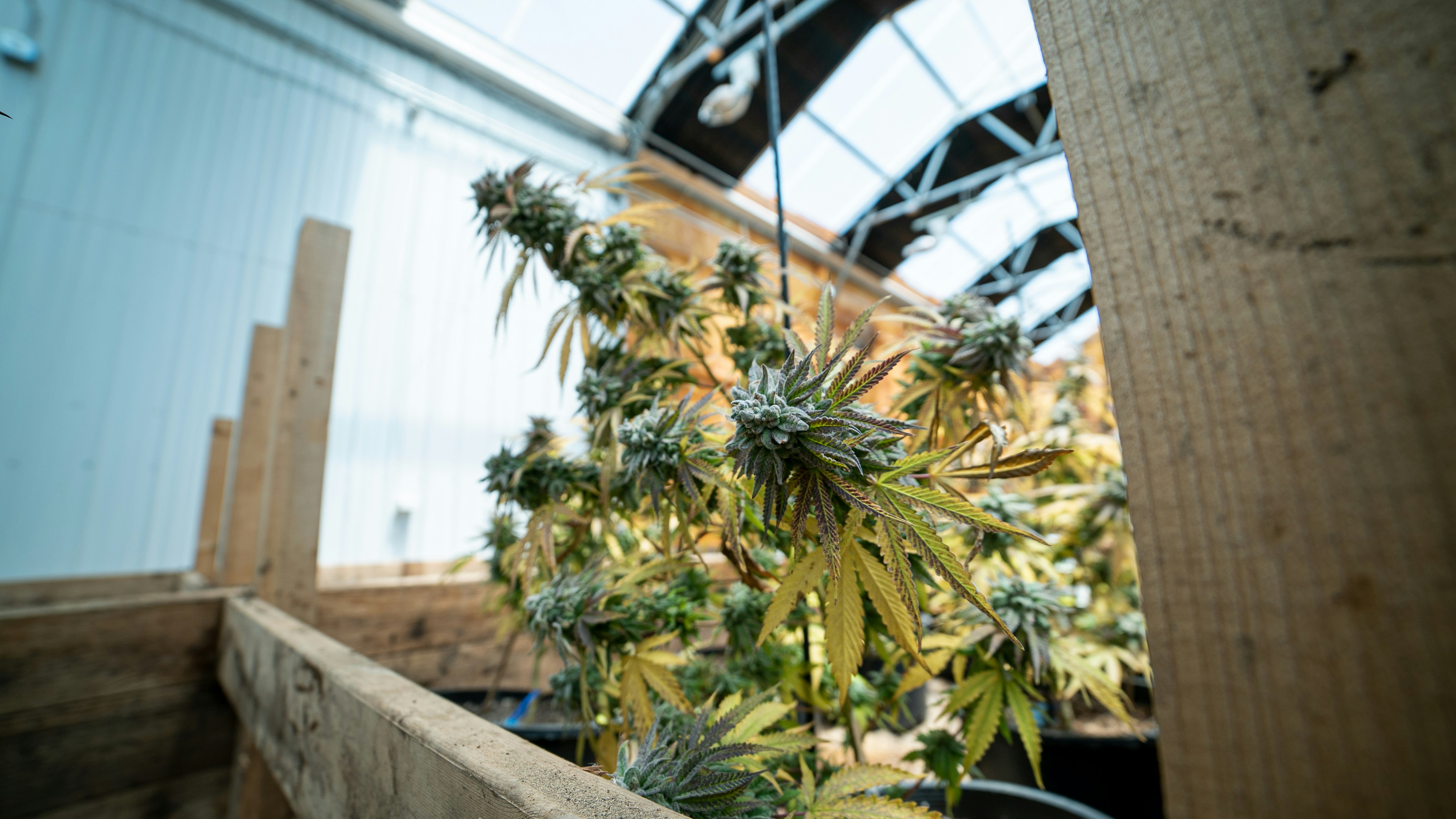Now Reading: The Use of Pesticides in Marijuana Growhouses: Recommended or Not?
- 01
The Use of Pesticides in Marijuana Growhouses: Recommended or Not?

The Use of Pesticides in Marijuana Growhouses: Recommended or Not?
Understanding Marijuana Cultivation and Pest Problems
The cultivation of marijuana occurs under highly controlled conditions, typically in growhouses or indoor environments designed to maximize yield and quality. These structures create a unique microclimate that is often conducive to the proliferation of various pests. The growth of cannabis plants is influenced by multiple factors including humidity and temperature. For instance, high humidity levels can facilitate mold growth, while warm temperatures can foster infestations of pests such as aphids, spider mites, and whiteflies.
Common pests in marijuana growhouses pose significant threats to plant health and overall yield. Aphids, for example, are small insects that feed on the sap of cannabis plants, weakening them over time and potentially transmitting diseases. Spider mites, although minuscule, can reproduce rapidly in warm conditions, leading to their numbers quickly escalating, which results in severe damage to the foliage. Additionally, the presence of thrips can cause scarring and discoloration, ultimately affecting the aesthetic appeal and marketability of the cannabis product.
To prevent these invasions, growers must maintain optimal conditions for plant health while considering the various aspects of pest management. Factors such as nutrient availability, irrigation practices, and air circulation directly impact the vulnerability of cannabis plants to pest infestations. Furthermore, pest problems not only threaten plant vitality but can also lead to larger economic losses, motivating growers to explore preventative measures and treatments. The importance of effective pest control strategies is underscored by the potential for naïve approaches to result in infested crops that can incur significant costs in terms of both immediate damage and long-term impacts on cultivation success.
Types of Pesticides Available for Marijuana Cultivation
The cultivation of marijuana, like many agricultural practices, can be affected by pests, diseases, and weeds. As such, growers often turn to pesticides, which can be broadly categorized into synthetic and organic options. Each type of pesticide serves a different purpose, targeting specific issues that may arise during the growth cycle of cannabis plants.
Synthetic pesticides, such as insecticides, fungicides, and herbicides, are widely used in the agricultural industry. They are designed to efficiently target pests and pathogens while offering rapid results. For example, common synthetic insecticides like Pyrethroids work by disrupting the nervous system of insects, providing immediate control over infestations. However, these products may have residual effects that could potentially impact plant health or consumer safety. Therefore, it is crucial for growers to adhere to recommended application guidelines strictly and observe pre-harvest intervals to mitigate any adverse effects.
On the other hand, organic pesticides have gained popularity due to their perceived safety and environmental benefits. Products derived from natural sources, such as neem oil or insecticidal soaps, are considered effective in controlling pests while minimizing the risk of chemical residues. Organic fungicides, like those containing Bacillus subtilis, can combat fungal diseases without the harsh effects associated with synthetic chemical formulations. Nevertheless, organic options can sometimes require more frequent applications and may not be as immediately effective in serious infestations.
Understanding local regulations is critical when selecting the appropriate pesticide for marijuana cultivation. The legality of specific pesticides can vary widely from one jurisdiction to another, affecting the choice of pest management strategy. Growers must ensure that any pesticide they consider is compliant with local laws, keeping in mind the evolving landscape of cannabis legislation.
Risks and Benefits of Using Pesticides in Marijuana Growhouses
The application of pesticides in marijuana growhouses is a contentious topic, as it encapsulates a balance of potential benefits and inherent risks. On one hand, pesticides can significantly enhance crop yields and create a more robust defense against pests. Growers often face challenges such as aphids, spider mites, and various molds, which can severely affect plant health and the overall quality of the marijuana produced. The use of pesticides can ensure that plants thrive by minimizing the threat posed by these pests, ultimately leading to more substantial harvests and improved economic viability.
However, the use of pesticides is accompanied by notable risks that cannot be overlooked. One of the primary concerns is the accumulation of pesticide residues on the final product, which can pose health risks to consumers. Regulatory bodies ensure certain pesticide limits are adhered to; however, consumers are becoming increasingly aware and cautious about the chemicals that may linger on their cannabis products. Moreover, there are environmental considerations to take into account. Pesticides can potentially harm beneficial insects and disrupt local ecosystems, which raises ethical concerns regarding their usage in cultivating marijuana.
The implications of pesticide use extend beyond health and environmental issues. The growing preference for organic and chemical-free products among consumers signifies a shift in market demand. Many consumers are willing to pay a premium for products recognized as organic, reducing the marketability of marijuana treated with conventional pesticides. This shift influences growers to consider integrated pest management (IPM) techniques, which focus on sustainable pest control methods while minimizing risks associated with chemical pesticide use. Ultimately, while pesticides can be an effective tool for marijuana cultivation, their usage must be carefully evaluated to balance benefits against the potential risks to consumer health and the environment.
Best Practices for Pest Management in Cannabis Grow Operations
Effective pest management is crucial for the healthy development of cannabis plants, particularly in grow operations where the use of pesticides must be carefully considered. Implementing Integrated Pest Management (IPM) techniques is key to minimizing pesticide reliance while ensuring robust plant health. IPM focuses on a holistic approach that combines cultural, biological, and mechanical strategies to manage pest populations effectively.
One of the primary strategies in IPM is the maintenance of optimal growing conditions. Proper environmental control—regarding light, humidity, temperature, and air circulation—can significantly reduce plant stress, making them less susceptible to pest infestations. For instance, ensuring adequate air flow around the plants can help prevent mold and mildew, while proper humidity levels can deter pests such as spider mites and aphids. Growers should regularly analyze their growing environment to adjust these parameters accordingly.
Utilizing beneficial insects is another effective method in the pest management arsenal. Introducing natural predators, such as ladybugs or predatory mites, can help keep pest populations in check without the need for chemical pesticides. These beneficial insects can naturally mitigate pests by preying on them, thus promoting a more balanced and healthy ecosystem within the growhouse. Additionally, employing traps and barriers can prevent pests from breaching the crops.
Regular crop monitoring is essential for early pest detection, allowing growers to take action before infestations escalate. Keeping a close watch for signs of pest activity, such as discolored leaves or webbing, enables timely intervention with either cultural practices or targeted organic treatments. By prioritizing such sustainable practices, marijuana growers can bolster their pest management efforts while significantly diminishing their dependence on chemical pesticides.













